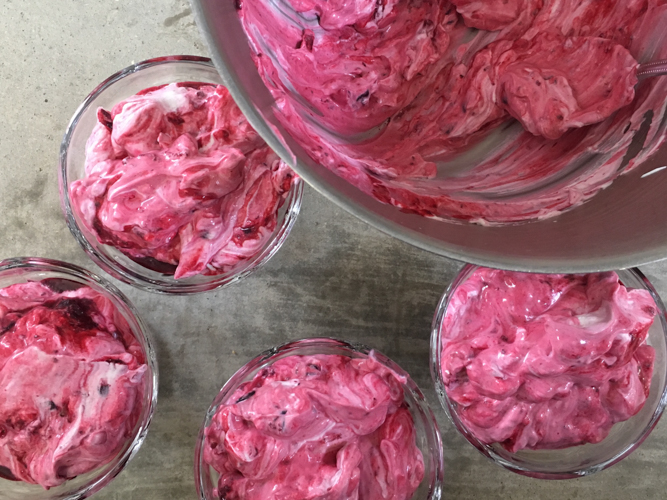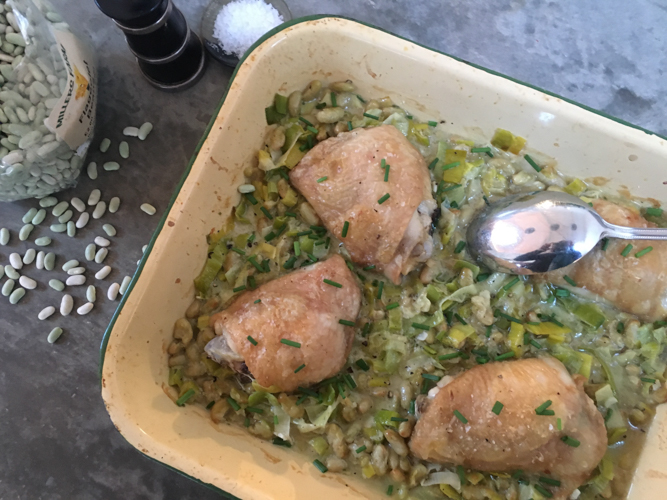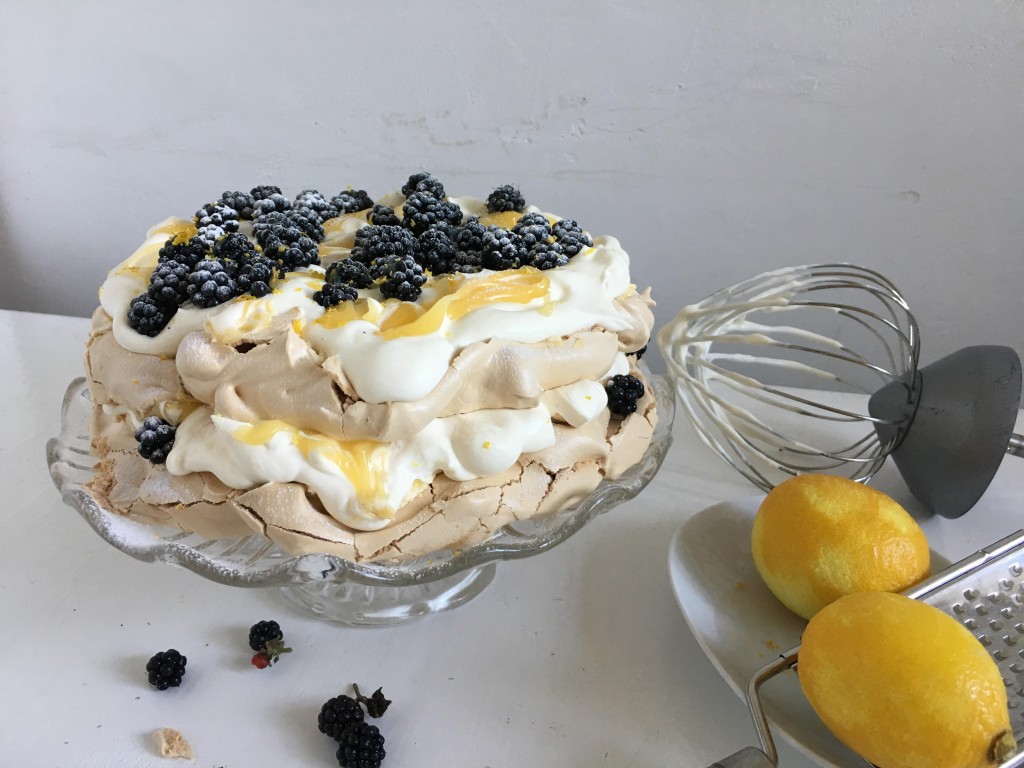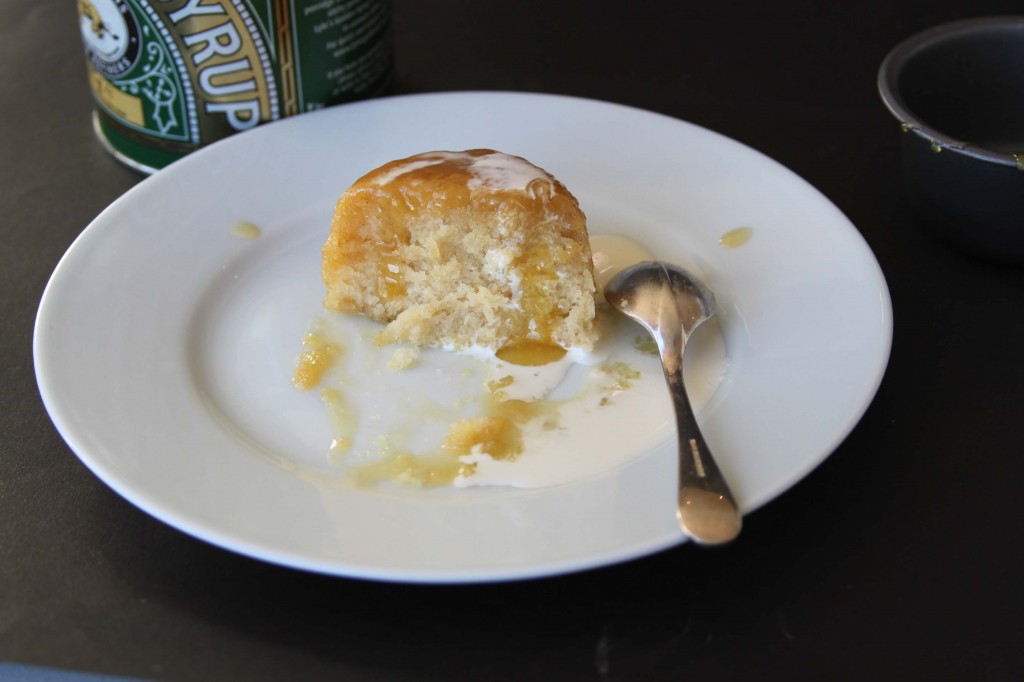
Well, here is a blast of summer. I’ve made no secret of my feeling that a weekend lunch isn’t complete without a pudding and we’ve tucked into no end of rib sticking treats appropriate to the colder months of the year. Golden syrup sponge, plum galette, apple crisp, raspberry larder pudding and a whole host of crumbles have made an appearance recently. Poking around in the freezer last weekend however I found a bag of blackcurrants which I’d picked last year and had been languishing in the icy depths since then. Whilst my surprise clearly illustrates that I am not one of those with a list detailing the exact contents of the freezer, the weight and when it was frozen etc – I was jolly pleased with my find.
Thawed and simmered briefly with sugar I mixed them with cream and yogurt and we delighted in that mouth puckering, tangy, fragrant hit that is unmistakably blackcurrant. Should you have any berries in your freezer I highly recommend making this or simply buy a bag of frozen berries – I use them all the time in the winter for various recipes.
Blackcurrant Fool
Don’t worry if you have a few less (or more) blackcurrants – a fool is pretty forgiving and 20/30g either way won’t make much difference. Equally if you need to use a bit less cream or yogurt the end result will still be fruity and delicious.
500g blackcurrants
100g caster sugar
200g double cream
200g Greek yogurt
Simmer the blackcurrants for about 10 minutes with the sugar until the fruit has broken down and the juices have become syrupy, cool. Whisk the cream until soft peaks hold, add the yogurt, mix again briefly and then swirl in the blackcurrants. Combine as much as you want – I like to seem some seams of pure blackcurrant but it is up to you. This served 4 with a bit left over for someones breakfast.

















